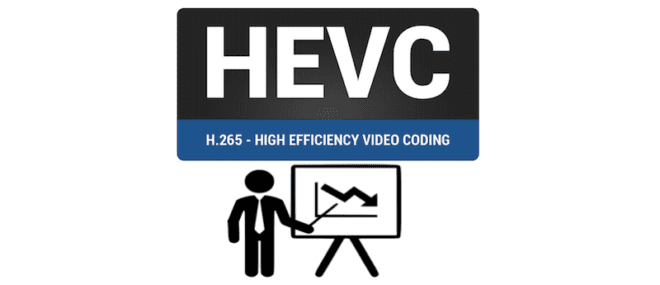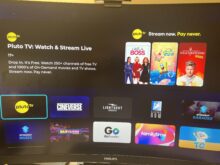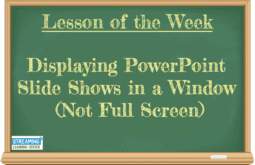As recently as June, HEVC seemed to have more momentum than the Golden State Warriors and New England Patriots combined, courtesy of Apple’s adding HEVC to HLS. Then, in the span of 30 days in January, the balloon popped as a trio of seismically negative events cast a dark shadow on HEVC’s future relevance and potential financial success.
Contents
Et Tu, Apple?
First, was Apple’s joining the Alliance for Open Media on January 4, signaling that HEVC was not the only game in town. Our best guess was that Apple’s move was motivated by a desire to succeed in the content game, which means supporting all potential endpoints, not just those with an Apple logo. Whatever the motivation, within the next two years or so, you would expect all Apple hardware to support AV1 playback.
Beyond the technological endorsement of AV1, Apple’s move lessens the likelihood that an IP-related legal action will arise, as you would expect the company performed its own due diligence before signing on. After all, Apple did just pay Nokia $2 billion for H.264 and other technology IP rights, and presumably wouldn’t deploy AV1 unless they felt it was resistant, if not impervious to challenge. Not to mention that Apple has plenty of cash to add to the legal war chest to fight any challenges.
HEVC: Third Best Codec
Then, on January 22, Moscow State University (MSU) released an update to their high-quality encoder comparison that included the results shown the table below. Not only did AV1 substantially outperform x265 encoding in two-pass and three-pass Placebo mode, VP9 outperformed x265 when running in the veryslow mode, the highest quality preset that’s actually used in production. This was with VP9 encoding in Good mode, roughly the performance equivalent of x265 in veryslow mode.
 Table: AV1 proved substantially better than HEVC in Placebo mode, while VP9 produced better quality than HEVC in very slow mode.
Table: AV1 proved substantially better than HEVC in Placebo mode, while VP9 produced better quality than HEVC in very slow mode.
There will be lots of challenges to these findings, but MSU has been doing these comparisons for years. More importantly, it uses settings supplied by the vendors to ensure optimal performance. So, using setting supplied by the vendors, HEVC placed third behind AV1 and VP9. Note that AV1 was literally 2,500-3,000 times slower than HEVC, so there are some caveats, but the VP9 to HEVC comparison seems right on point. This could become immediately more relevant if Apple adds VP9 support to its various endpoints, which is certainly possible.
He Just Had to Let it Go
The final knife thrust came from the most unlikely source, Leonardo Chiariglione, the head of the Motion Picture Experts Group (MPEG) that jointly created the HEVC standard with the ITU. In a remarkable blog post entitled, A Crisis, the Causes, and a Solution, Chiariglione reviewed the state of HEVC licensing and the impact of the Alliance for Open Media (AOM), and concluded, “At long last everybody realises that the old MPEG business model is now broke, all the investments (collectively hundreds of millions USD) made by the industry for the new video codec will go up in smoke and AOM’s royalty-free model will spread to other business segments as well.”
Though he proposed several potential solutions, he concludes, “I personally doubt that something will be done, though, seeing how blindfolded the industry is. As I like to say, God blinds those He wants to lose.” The closest analogy is to a frustrated and long-suffering parent who decides that it’s just time to let a ne’er-do-well child go its own way and fail.
Hopefully, this terrible, horrible, no good, very bad month of January will provide some motivation for the HEVC IP-owners to get their act together and present a cohesive, reasonable, and format-promoting royalty schedule. Like Chiariglione, I’m not optimistic.
 Streaming Learning Center Where Streaming Professionals Learn to Excel
Streaming Learning Center Where Streaming Professionals Learn to Excel










With the exception of some media formats, web formats and protocols are royalty-free. As founder and chairman of MPEG Leonardo Chiariglione says, soon video will join them. The predictions long made by royalty-free media format proponents have all come to pass. HTML5 video killed off Flash. VP9 and AV1 will kill off H.264 and HEVC on the web.
Always bet on open.
“Getting their act together” could only mean suing their former customers. It is not something to be “hopeful” for.
We can instead hope that they will gracefully bow offstage and stop retarding advancement in media formats.
Media format evolution is an excellent example of a process better suited to standardization bodies, and public grants to research devoted to optimizing existing formats and developing wholly new ones. The corporate rent-extracting model was never a good fit, which the long delays in adoption of better formats demonstrate.
Nathan – actually, I was thinking more of formulating a rational royalty policy closer to H.264, which was a success at every level. I’m not against all royalty-bearing technologies, I just think that the HEVC IP holders have been beyond idiotic in their financial goals and roll out of the royalty. If there was a single pool, with a reasonable price, I’d be all for it. I’m guessing we disagree, and that’s OK, but I wanted to be clear.